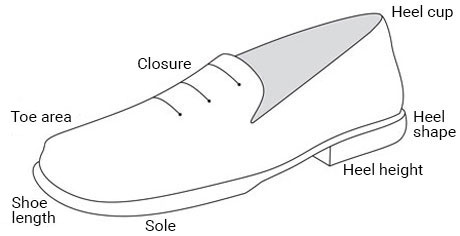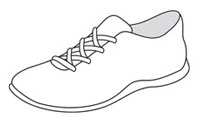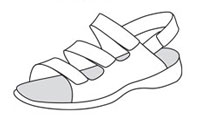Preventing Slips, Trips and Falls
Supportive shoes
Page Content
Wearing shoes that fit well and provide support can help lower your risk of falling.
Choosing the right shoes

Here is what to look for when you are shopping for supportive shoes:
- Shoe length: Check that your shoe length is 6 mm (1/4 inch) longer than your longest toe.
- Closure: Shoes that close with laces or Velcro give you a snug fit. They also allow for your feet to swell a bit throughout the day.
- Heel cup: This is the back of shoe that covers the heel. Make sure it provides support and doesn’t slip.
- Heel shape: Choose a shoe with a wide, rounded heel to give more contact with the ground.
- Heel height: The heel should be about 6 mm to 2.5 cm (1/4 inch to 1 inch) high.
- Sole: Check that the bottom of the shoe has a good grip but does not stick to carpet.
- Toe area: Make sure the toe area is deep and wide enough so your toes can move.
Types of shoes
Running shoes are supportive. Choose a pair with a thin sole so you can feel the surfaces you walk on. |

|
The best type of sandal has a back strap, covers your foot and is adjustable. |

|
What to avoid
To keep your feet supported and prevent falls, keep a pair of supportive shoes for wearing indoors only. Try to avoid the following:
- floppy slippers with an open heel
- heavy shoes
- going barefoot or being in stocking feet (Have a pair of shoes that you wear only indoors.)
Learn more about risk factors for falling.
Current as of: May 30, 2024
Author: Fall Risk Management Program
